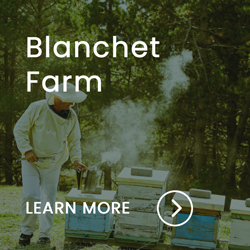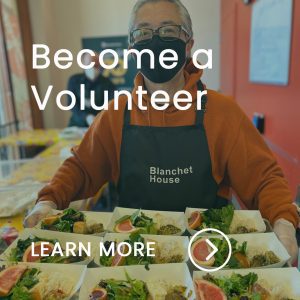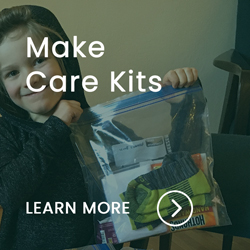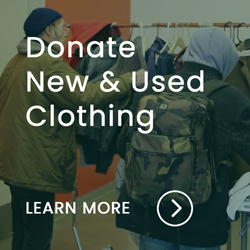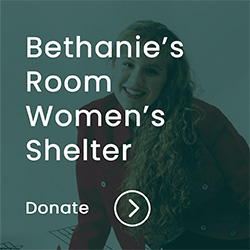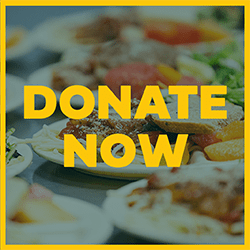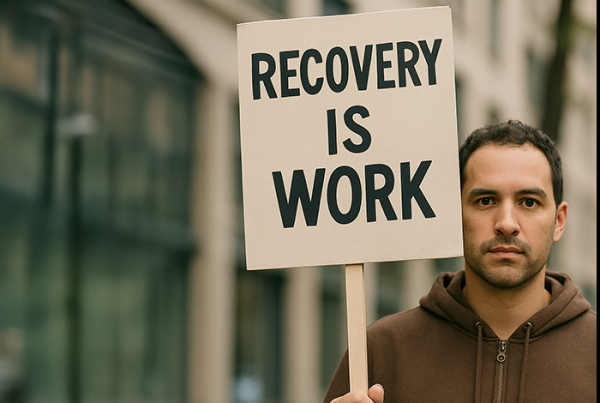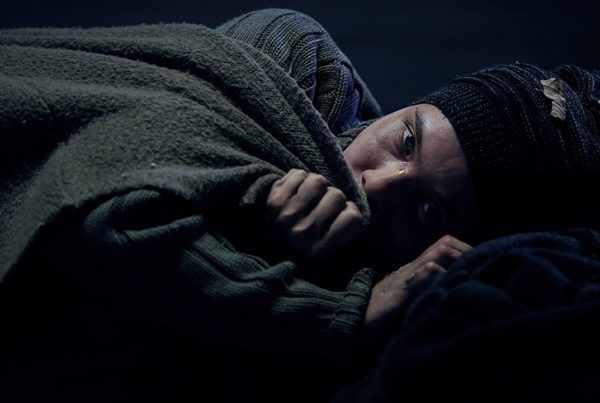Harm reduction can lessen health and safety risks associated with drug use.
In my time working as a Peer Support Specialist at Blanchet House in downtown Portland, I, along with many others have observed an uptick in drug overdoses. A year ago, I would respond to about one or two overdoses per month, now over only two weeks, I have responded to more than 10 overdoses.
Many of my peers (aka clients) have informed me that there are “bad batches” of drugs going around. This usually means that there has been an increase in the amount of fentanyl added to substances that people are consuming. With the addition of this potent narcotic, more people who use drugs are experiencing fentanyl overdoses which can cause death unless reversed quickly. This is where harm reduction can come in to help people who use drugs consume more safely and make better-informed decisions.
What is harm reduction?
Harm reduction has become a sort of philosophy that can encompass many practices and beliefs. Fundamentally, harm reduction is an approach meant to mitigate health and safety risks associated with drug use. Harm reduction can help all people who use drugs, whether they have a problematic relationship with drugs, or not.
However, not all people who use drugs have a problematic relationship with drugs. For people with an abusive relationship with a drug, harm reduction can be even more critical as it can keep people alive while on their path to addiction recovery.
Harm reduction is a method to help someone recover from abusing substances, including me.
Why is harm reduction important?
Harm reduction is important for many reasons, but two distinct reasons come to mind. One, it can be a gateway to addiction recovery for those seeking abstinence. And two, it is a way to consume safely for those not seeking abstinence, whether because they do not have a problematic relationship with drugs or because they identify abstinence as not feasible for them.
As I mentioned earlier, not all drug users have problematic relationships with drugs. We see this, especially in Oregon where substances such as marijuana and alcohol are socially accepted recreational drugs. Many people do not need or seek abstinence from controlled substances. Though I know many people whose lives were saved by abstinence, abstinence is not a solution for everyone with a problematic relationship to drugs, because just as every person is different, so are their needs and behaviors. Recreational drug usage has always been around and will continue to be around, so we must provide harm reduction to lower the health risks that can be associated with usage.
It’s important to know that people’s bodies can become dependent on a substance, and it can be lethal for them to quit using it outside the medical care of a detox facility. Detox facilities in our area are often full so people who want to cannot get in immediately. It’s not uncommon for someone to be deterred from using detox because they fear being discriminated against or mistreated based on past experiences, or because of certain minority classes based on gender, race, and income level.
Regardless of why someone seeks out harm reduction, it is crucial because it lowers their chances of an overdose, lessens the number of emergency room visits, and reduces the spread of infectious diseases. Harm reduction benefits public health.
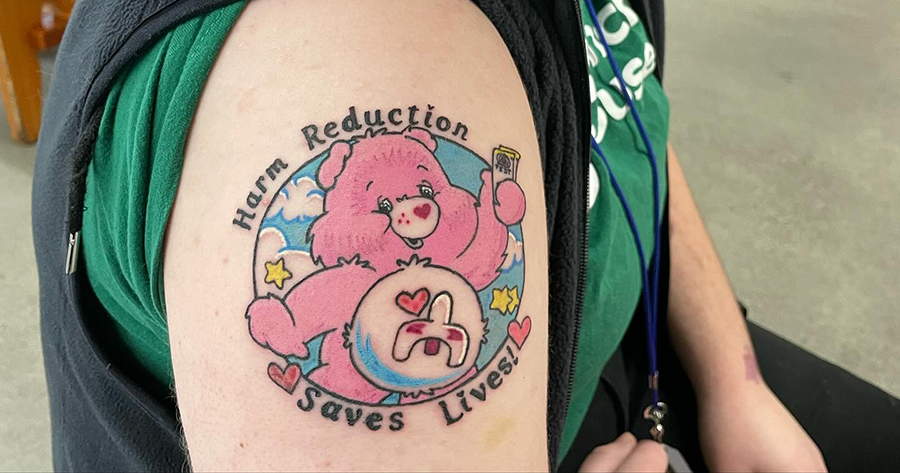
A tattoo on Duke Reiss’s arm depicts a Care Bear with the harm reduction tools Narcan and fentanyl test strips.
What does harm reduction look like?
Harm reduction activities can look like needle exchange programs, distributing naloxone commonly known as Narcan, distributing fentanyl test strips, and other means to help lessen the risk of adverse outcomes associated with using drugs.
Fentanyl Test Strips
Fentanyl test strips are small pieces of paper that can detect the presence of fentanyl in different kinds of drugs like cocaine, methamphetamine, and heroin. Strips can also be used to determine the safety of various drug forms like pills, powder, and injectables.
Fentanyl test strips are important because they let the drug user know if what they are about to consume has fentanyl in it. Even if they still choose to consume, these test strips let the drug user know to proceed with caution and to be prepared in case there is an overdose. There have been many overdose deaths in the Portland area where a person thought they were consuming a recreational drug, only to find out it was cut with fentanyl.
Narcan
Drugs with fentanyl added to them are more likely to require multiple doses of Narcan, a lifesaving drug that blocks the opioid receptors to temporarily stop an overdose. The typical package of Narcan-brand naloxone contains two doses. Expanding distribution and making access to Narcan easy and low-cost is important to saving lives. Providing free Narcan to people who use drugs is critical.
Safe Consumption
Consuming drugs with or around other people is another method of harm reduction. Using with others helps to reduce the risk of death due to overdose because there is someone else to respond with Narcan or to call 911.

Duke Reiss carries Narcan and a face shield for safely administering CPR.
Signs of a Drug Overdose and What to Do
Perhaps the easiest harm reduction tool we all can have in our toolkits is the knowledge of how and when to respond to an overdose. I get asked all the time to explain how to know if someone is overdosing instead of sleeping. When I see someone lying on the ground, seemingly unwell, I always start with a verbal check-in. If possible, I will knock on the floor or wall next to them to create some noise to see if it rouses them. If they respond, I will apologize for disturbing them, and let them know I just wanted to make sure they did not need medical attention.
But the truth is, unless someone is covered in blankets or is in a sleeping position, there’s no way to know for sure if you’re witnessing an overdose. I tend to leave those lying under blankets alone, undisturbed. If they have not moved from their spot in several hours, then I will check in on them. I have experienced many people getting upset with me for checking in with them, but that does not begin to compare to the number of times I have checked in on people to find out they ARE overdosing. If you are comfortable taking on the risk of possibly upsetting people, checking in on our neighbors outside can save lives.
Now say you do a check-in, and they are not responding verbally or moving.
What are the signs of an overdose?
- Rigid or locked up body; or the opposite, a limp body.
- Slowed or shallow breathing.
- Slumped over in an awkward position.
- Unresponsive or unable to communicate.
- Blue or pale in the face.
What to do if you think someone is overdosing?
- Test for responsiveness. First, determine if they will respond to loud noises. Call out, ask if they are okay, and knock on the floor or wall next to them to create some noise. If they are unresponsive, alert them that you are calling 911.
- Ask for help. If possible, ask a passerby, friend, peer, or neighbor to stay with you.
- Call 911. 911 will direct you to put them into a rescue position. The rescue position has you turn someone onto their side with their arms out.
- Check their breathing. Once they are in the rescue position you will check their breathing. The 911 operator will count their breathing with you. During this time, you will alert 911 anytime the individual’s chest moves.
- Sternum rub. 911 may also direct you to do the sternum rub to see if this gets the individual responding. This means you will put your knuckles on their sternum and rub relatively hard to try to jolt them awake.
- Administer Narcan. If you have Narcan 911 will tell you to administer it. Make sure to switch nostrils between dosages and that the individual has a clear airway. IMPORTANT: You will not hurt someone by administering Narcan even if they are not overdosing. If possible, ask another person to grab more Narcan and gloves. You will typically need four doses of the standard 2 mg Narcan when fentanyl is involved. I have been directed by 911 to use up to seven doses in my time of handling overdoses.
- Mouth-to-mouth resuscitation. If you have CPR training and know the individual or have a CPR shield mask, consider giving mouth-to-mouth resuscitation to increase their chances of survival.
- Stay with them. If the person wakes up before the ambulance arrives, ask them to stay to be evaluated by a paramedic. Inform them the chances of them re-overdosing once the Narcan wears off is high. If they refuse to stay around for the ambulance, ask them to stay around a populated area, around friends, or to stay within your sight for the next half hour to hour. Many people can be scared after being saved by Narcan and may flee the area.
Stigma against harm reduction
Often, people in addiction recovery or those who have never been in recovery, see abstinence as the end goal for all drug users. The stigma against drug use can encourage unsafe usage practices like using alone or in secret, or feeling shame in accessing resources to reduce harm.
When the average person uses a recreational drug or alcohol, it is seen as tolerable, but unhoused folks are expected to be abstinent. Reporting by the American Addiction Center finds high usage rates among people in the tech industries in particular and is accepted by their peers.
Unhoused people face more stress, danger, and obstacles in their day-to-day survival which can make substance use a way of coping. But, when an unhoused person uses, they are told they need to go into treatment or be abstinent to get into a shelter, even if usage did not lead to their being unhoused. Most unhoused people are unhoused because of rent prices being too high, being unable to work due to disability or injury, mental health barriers, or other challenges to affording housing.
It’s a double standard.
Many shelters will even drug test for marijuana, despite it being legal in Oregon. This idea that unhoused people cannot use substances, but that housed people are allowed to, is a deterrent for many people to get into shelter. Though there is always a need for abstinent spaces, just as important is the need for non-abstinent spaces. There are many different needs, many different stories, and many different struggles. We cannot loop everyone into a one-size-fits-all abstinence program. Nor would a one-size-fits-all non-abstinence program be the solution either. But rather, a plentiful combination of the two. That is how we can bring harm reduction strategies into the shelter systems.
How can you help deter stigma against harm reduction?
We can combat stigma against harm reduction by being knowledgeable about its advantages, being an active participant in harm reduction services, and sharing our lived experiences. For myself, it was a long process of learning to be comfortable talking about my recovery journey and how harm reduction saved my life.
I used to never share my story of my problematic relationship with substances. It was not until I started seeing how sharing my journey inspired others to learn more about harm reduction and to try to use it safely that I began to share. By sharing my story, and how harm reduction and my community saved my life, I show others that all lives are worthy of care and rescue. The impact we have as those with lived experience is tremendous, and those of us with lived experience are in a good position to support others as we once needed that same support.
Harm reduction comes down to one principle: everyone deserves life-saving support and care. The beauty of it is that everyone is capable of giving that care.
Acknowledgments
I want to acknowledge a couple of things.
Harm reduction is so much more than safe usage techniques for a lot of the community. It covers many different topics, all with the goal of respecting people’s autonomy and to help mitigate harm. Perhaps equally as important as harm reduction in the drug-using community, is harm reduction in the sex work community, in the mental health community, and the community of those living on the streets. Harm reduction has a rich history built off the community work of many disabled, BIPOC, and queer community members. A good book about harm reduction, that encompasses how it is practiced and the history of it being started in communities, is the book called “Saving Our Own Lives” by Shira Hassan.
Lastly, I, nor any one person can ever be an expert on this complex topic. No matter how much lived experience, or work experience we have, those of us in recovery need to be mindful to not overshadow the voices of our neighbors who are still consuming. I am mindful of the fact that harm reduction is not that for everyone. For some people, it is to just mitigate the harm and risks associated with usage. And that is lifesaving and worth celebrating on its own. Not everyone who uses substances NEEDS recovery. And for those of us who utilized harm reduction for our recovery, we need to be mindful of that.



